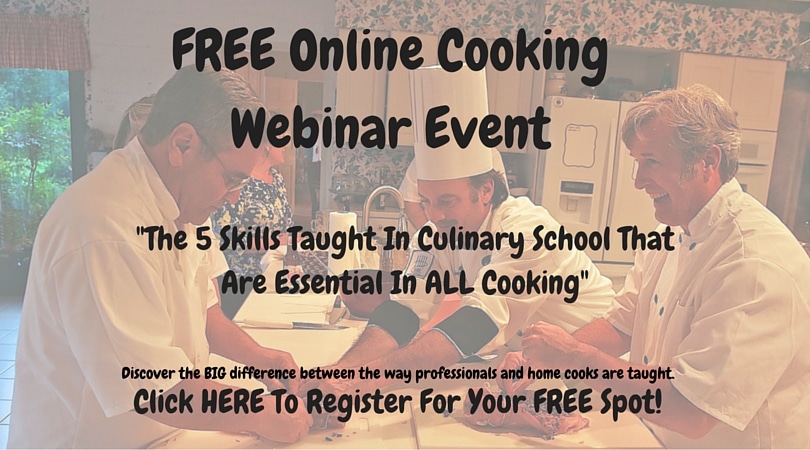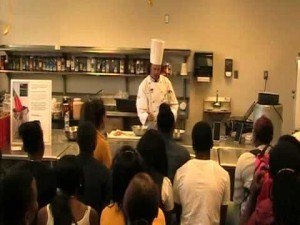I’m trying to make the point to a group of visiting high school students that if they create a chicken mcnugget from the freshest ingredients, they’ll have the most energy. In Part 1 of the class, I wanted them to think of Food As Fuel, and realize that what they eat directly impacts their brain power and attention span.
I’m borrowing a technique from Chef Jamie Oliver where he did a Chicken McNugget experiment, showing children how the item is made from pureed chicken fat, cartilage and some meat. I’m hoping to impress them with knowledge of where their food comes from and why it can be the difference between energy and lethargy.
I used the analogy at the beginning of class that food is like batteries in a flashlight. Loading two flashlights with different batteries, one with large “D” sized cheap energy, and another with more expensive “AA” sized energy, we quickly saw that bigger and cheaper isn’t necessarily better. The “D” batteries quickly burned out.
When you eat cheaper food, you burn out quickly too. So, the demonstration today is how to make your own chicken mcnugget. They’re actually quite simple if you know a standard breading procedure. But first, we have to identify exactly what good food is.
In general, foods are made of proteins, fats and sugars. It’s the proteins that give us brain power, strong nails, shiny hair, and the ability to strive for excellence. “What is the difference between average and excellent?” I ask the class. “Why are some athletes the best”? It’s because of the fuel in their bodies.
The most desirable part of a raw chicken is the breasts, then the legs and thighs. They are the best fuel for the human body, and they cost a bit more than fast food processed chicken. So, how does the national McLaboratory make this “food” cost so little? It’s because they use the cheapest energy, just like the “D” cell batteries. They’re big on volume, but short on substance.
A chicken mcnugget is made by a scientist, not a chef. It’s formulated for marketing, not energizing high school students. The parts of the chicken left over from removing the high energy parts are what go into a formed chicken disk, along with binders and lots of corn.
In order for the students to create their own bite-sized bit of poultry protein, I’ll have them cut fresh chicken breasts into cubes, dredge them in flour, then dip them in egg and coat in a very crunchy and light Panko crumb coating.
The entire class seems excited to accept this challenge, and they get right to work. They’re not repulsed by raw chicken, readily dip their fingers into beaten egg, and arrive at a crunchy product that is different sizes because they weren’t made in a factory. This chicken was grown on a farm.
Instead of adding fat by deep frying, their creations are placed in a very hot oven to roast and turn golden brown. When they are finished cooking, they look a lot more appetizing than the grease soaked chunks from the drive through.
I’m sure I’ve got them! I’m sure I’ve made my point, but when I hold up the fresh, nutritious, wholesome bites that we just made together, I’m shocked at the response. Each and every student would STILL rather have a chicken mcnugget from the fast food restaurant. Why?
“Why would you still choose the fast food version?” I had to ask. It’s inconceivable to me. I have access to a grocery store. I’ve been taught what fresh chicken is, and I’ve eaten fresh chicken most of my life. Engineered food repulses me and I know the effects of living on corn. So why would they still choose the greasy one?
“That just doesn’t look good” was the response, and my entire world changed. I suddenly gained a new perspective on teaching fresh food and cooking. These students have the direct opposite opinion than I do. The fresh chicken looks weird, strange and not appetizing. The formed poultry puck is familiar and comfortable.
It’s a terrible by-product of food deserts in urban centers. The young children can’t even identify a fresh piece of chicken. Chicken to them IS a mcnugget.
I’ve got A LOT more work to do to change the world’s view of food. Back to the drawing board for me.
Discover the difference between how professionals and home cooks are taught in my next
FREE Webinar Workshop
Claim your FREE Spot for the next webinar session by CLICKING HERE


